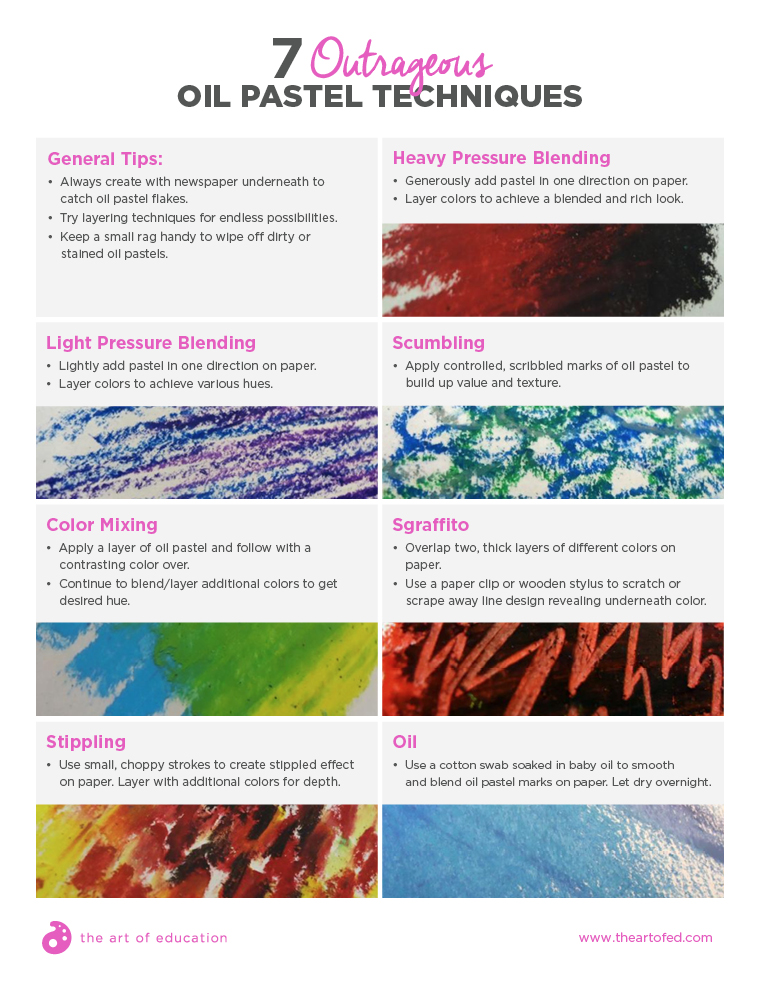Oil pastels are one of those mediums that you either love or hate. Sometimes, the mess of them smeared over every surface just outweighs the benefits of using them in your classroom.
Maybe you have always felt that you were demonstrating techniques incorrectly leading to your students’ work looking like they used plain ol’ crayons. Well, have no fear! Here are seven techniques to wow your students with the next time you dig out the oil pastels. Be sure to download the handy guide at the end of this article!

1. Heavy Pressure Blending
Generously add oil pastel in one direction onto your paper. Layer additional colors on top to create a rich, blended look. Experiment with black or white pastel for shadowing and highlighting effects. Here’s a quick lesson that uses this technique.
2. Light Pressure Blending
Lightly add oil pastels on paper with little pressure. Layer more colors to achieve various values or even different hues.
3. Color Mixing
Apply a rich layer of oil pastel then follow with another color applied on top (consider trying primaries first). Continue to blend/layer additional colors to achieve your desired hue. Students could practice this technique when creating nature drawings. Check out Oil Pastel Nature Drawings FLEX Lesson which you can find in FLEX Curriculum.
4. Stippling
Using small, choppy strokes, create a stippled effect on your paper. Layer additional colors for depth within your technique.
5. Scumbling
Apply controlled, scribbled marks of oil pastel. Build up with additional layers of various colors to reach desired value and texture.
6. Sgraffito
Overlap two thick layers of different oil pastel colors on paper. Using a paper clip or wooden stylus, scratch or scrape away line designs revealing the color underneath.
7. Oil
Using a cotton swab soaked in baby oil, smooth the oil pastel to create blended color or your paper. Let dry overnight.
Try these techniques the next time you are considering using oil pastels in your classroom. You and your students will be surprised at the flexibility of this adaptable material. For additional reference, I’ve created a guide for all the techniques mentioned available for download below!
Download NowStudents in our Instructional Strategies class regularly share ideas just like these. If you need PD hours and want to take a relevant course, Instructional Strategies is a slam dunk. The collaboration and participation between class participants is amazing. You’ll walk away with lessons, technical strategies and fixes for your most common materials issues. You can’t leave the course uninspired!
What is your favorite way to create with oil pastels?
What oil pastel techniques do you regularly show students?
Magazine articles and podcasts are opinions of professional education contributors and do not necessarily represent the position of the Art of Education University (AOEU) or its academic offerings. Contributors use terms in the way they are most often talked about in the scope of their educational experiences.






